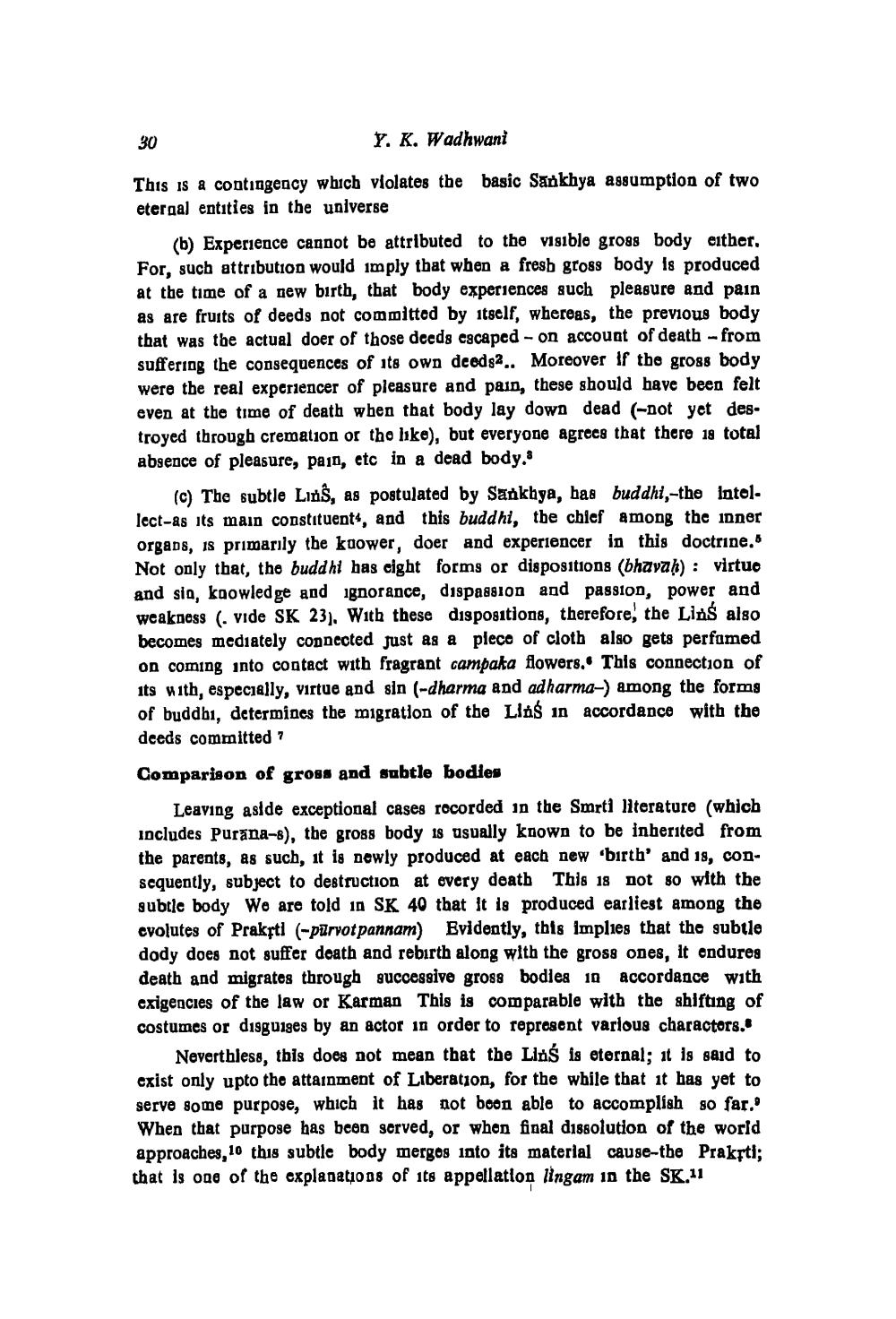________________
30
Y. K. Wadhwani
This is a contingency which violates the basic Sankhya assumption of two eteraal entities in the universe
(b) Experience cannot be attributed to the visible gross body either. For, such attribution would imply that when a fresb gross body is produced at the time of a new birth, that body experiences such pleasure and pain as are fruits of deeds not committed by itself, whereas, the previous body that was the actual doer of those deeds escaped - on account of death - from suffering the consequences of its own deedg2.. Moreover if the gross body were the real experiencer of pleasure and pain, these should have been felt even at the time of death when that body lay down dead (-not yet destroyed through cremation or the like), but everyone agrees that there 18 total absence of pleasure, pain, etc in a dead body.
(c) The subtle Ling, as postulated by Sankhya, has buddhi,-the Intollect-as its main constituents, and this buddhi, the chief among the inner organs, is primarily the kaower, doer and experiencer in this doctrine. Not only that, the buddhi bas cight forms or dispositions (bhavaḥ) : virtuo and sia, kaowledge and ignorance, dispassion and pags10n, power and weakness (. vide SK 23). With these dispositions, therefore, the Lins also becomes mediately connected just as a plece of cloth also gets perfamed on coming into contact with fragrant campaka flowers. This connection of its with, especially, virtue and sin (-dharma and adharma-) among the formg of buddbi, determines the migration of the Llas in accordance with the deeds committed ?
Comparison of gross and subtle bodies
Leaving aside exceptional cases rocorded in the Smrti literature (which includes Purana-8), the gross body is usually known to be inherited from the parents, as such, it is newly produced at each new birth' and 18, conscquently, subject to destruction at every death This 18 not 80 with the gubtle body We are told in SK 40 that it is produced earliest among the evolutes of Praksti (-pārvot pannam) Evidently, this implies that the subtle dody does not suffer death and rebirth along with the gross ones, it endures death and migratos through successive gross bodies 10 accordance with exigencies of the law or Karman This is comparable with the shifting of costumes or disguises by an actor in order to represent various charactors.
Neverthless, this does not mean that the Lins is eternal; it is said to exist only upto the attainment of Liberation, for the while that it has yet to serve some purpose, which it has not boon able to accomplish so far. When that purpose has been served, or when final dissolution of the world approaches, 10 this subtle body merges into its material cause-the Prakti; that is one of the explanations of its appellation lingam in the SK.11




